The right tree (or plant) bark to use for herbal tisanes, infusions and teas, made easy for you.

Just like roots, leaves and flowers, the bark of trees and plants are used to flavour foods and herbal teas. With the flavour also comes a wide range of benefits to better our body, mind and soul. Below we will discuss the medicinal uses of barks that the world has to offer us.
**As with most medicinal herbs, please check with your health care practioner, naturopath or homeopath if your are pregnant, breastfeeding, on medications or have allergies before consuming these herbs**
For fast tracking click on a bark:
Barberry Bark, Buckthorn Bark, Cascara Sagrada Bark, Cat's Claw Bark, Cinnamon Bark (Cassia and Ceylon), Cramp Bark, Pau d'Arco Bark, Prickly Ash Bark, Slippery Elm Bark, White Oak Bark, White Willow Bark, Wild Cherry Bark
Barberry Bark
Also known as: Berberry

The barberry plant, botanical name Berberis Vulgaris, is a thorny shrub native to Europe, North Africa and Asia. With oval shaped clustered leaves and bunches of yellow flowers, the barberry plant produces edible oblong red berries that are tart and refreshing. The bark used in tisanes is made with the stems and root husks, and holds similar properties to the berries. An important active compound found in barberry bark is berberine (an alkaloid) that has strong antimicrobial and anti-inflammatory effects, as well as lowering blood pressure (hypotension). Thus, it can be used to treat fungal, bacterial and parasitic infections with a strong emphasis on maintaining and bringing back gut health, such as stopping diarrhoea associated with E. coli and IBS, and fighting candida overgrowth. Berberine is also reported to aid those with Type 2 diabetes by reducing blood sugar levels, aid those with high cholesterol by lowering the 'bad' cholesterol and those with thyroid disorders, cardiovascular and liver diseases. Other uses for barberry is to combat urinary tract infections because of its strong antibacterial effects, therefore, its use to keep the kidneys healthy is a plus.
Drinking a cup of barberry tea a day is considered safe however not enough research has been put into determining a correct dosage, therefore if any adverse reactions occur discontinue use or consult a homeopath or naturopath.
Buckthorn Bark
Also known as: Black Alder, Alder Buckthorn, Alder Dogwood, Black Dogwood
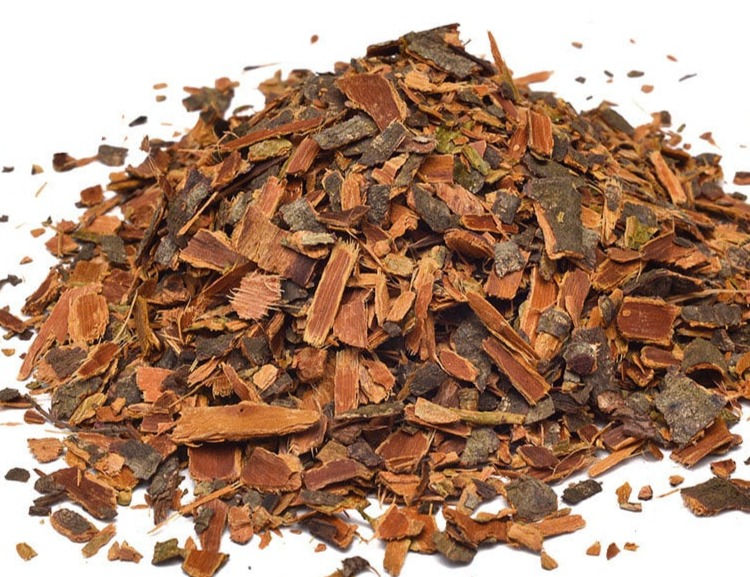
The buckthorn plant, most commonly known as Alder Buckthorn is known by two scientific/botanical names. Originally referred to as Rhamnus Frangula and now Frangula Alnus, this buckthorn plant is the only one of its genus to not possess thorns. This deciduous shrub grows up to 7 metres, although it rarely forms a small tree with a 20cm diameter trunk. The dark brown bark is harvested and dried for one year before it is ready for consumption. This is because the fresh bark contains an irritant that causes vomiting, however when dried for a long period of time the irritant dissipates and is safe to consume. The main use of buckthorn bark is to relieve constipation and detoxify. A compound called Anthraquinones, with 3-7% found in the bark, causes the colon muscles to stimulate allowing for a gentle evacuation of the bowels usually 8-12 hours after ingestion. The compound is also antibacterial and has anti-cancer properties allowing for it to detoxify at the same time. Buckthorn bark also causes bile release into the intestinal tract, which promotes healthy liver and gallbladder function. Bloating is also reduced and digestion is improved with the stimulation of muscles that would usually not be moving and should be. Buckthorn bark may also help the healing process of haemorrhoids by alleviating strain when passing stool as well as keeping the colon healthy.
Do not take buckthorn for extended periods of time or take more than the recommended dosage. Not much is needed of the bark for it to do its job. Taking too much will cause diarrhoea and cramping.
Drinking a cup (to three) of buckthorn bark a day is considered safe for no more than two weeks. It is considered more of a detox and cleanse, therefore every two months is appropriate for that. Increasing your fibre and water intake is the best method to keep constipation away, never solely rely on products like this.
Cascara Sagrada Bark
Also known as: Cascara, Bearwood, Cascara Buckthorn, Chittembark, Yellow Bark
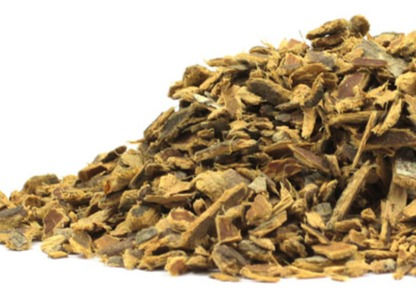
The cascara sagrada plant is a large shrub native to North America that can grow into a small tree similar to the Alder Buckthorn shrub above. Known as either Frangula Purshiana or Rhamnus Purshiana, cascara sagrada is from the same family as Alder Buckthorn and thus possesses the same properties. The Spanish translation of the name means, 'sacred bark' which is said to come from the similarity to the wood used for the ark of the covenant. Cascara sagrada bark goes through the same ageing process as buckthorn bark (dried for one year) as the use of the fresh bark will cause vomiting. With the compound, Anthraquinones (see above) found in cascara sagrada, the bark works as a gentle laxative relieving constipation (6-12 hours after) and this helps detoxify and cleanse the bowels by also releasing bile that aids in a healthy liver and gallbladder. Because cascara sagrada is classified as a 'bitter herb' is does what is called a 'bitter reflex' in the digestive system by stimulating the brain into releasing the digestive hormone gastrin which produces gastric acid that aids in the proper release of digestive enzymes, appetite stimulation, pancreatic hormone secretion (regulates blood sugar, insulin and glucagon) and the killing of bacteria that may have been ingested. Lastly, cascara sagrada is also rich in a compound called emodin that has anti-microbial and anti-fungal properties supporting it's traditional use to rid the body of parasites and aid in the overgrowth of candida, H. pylori and E. coli.
Do not take cascara sagrada for extended periods of time or take more than the recommended dosage. Not much is needed to feel the effects. Taking too much will cause diarrhoea and cramping.
Drinking a cup of cascara sagrada bark a day is considered safe for 1-2 weeks only. The bark is considered more of a cleanse and detox, therefore every two months is appropriate but not necessary. Increasing your water and fibre intake is the best method to keep constipation away, never solely rely on products like this.
Cat's Claw Bark
Also known as: Una de Gato, Life-giving Vine of Peru
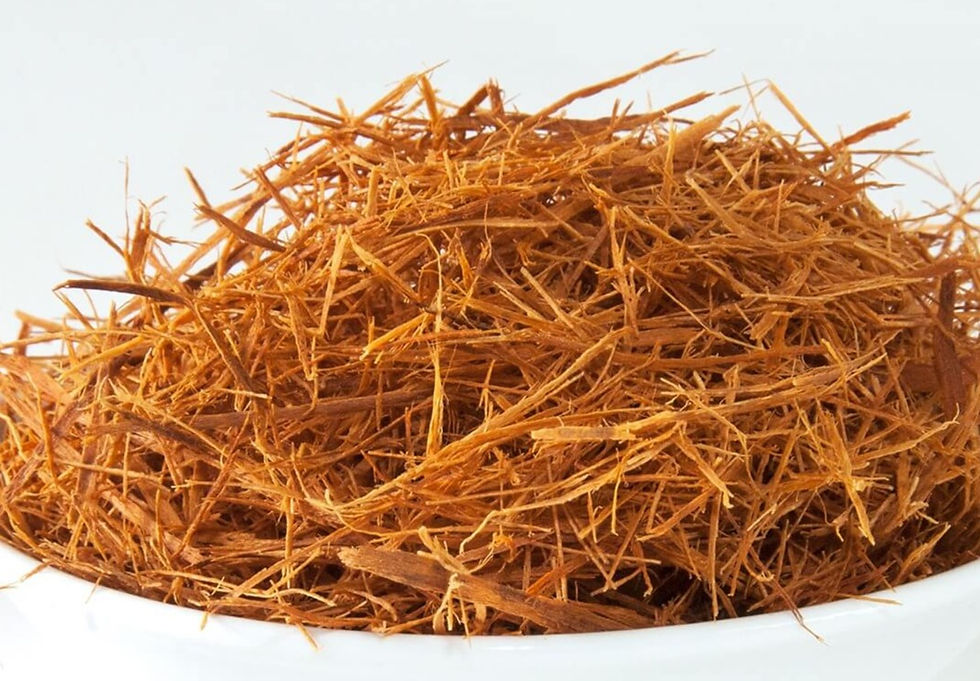
The cat's claw plant is a tropical woody vine native to South and Central America, belonging to the Rubiaceae family. The most common species used medicinally are Uncaria tomentosa and Uncaria guianensis, with the former being the most common found for use. Cat's claw is a liana vine (uses trees and other means of support to grow) and has pairings of hook-like thorns that resemble cat's claws, hence its name. Cat's claw is mainly advertised as a treatment for symptoms associated with osteoarthritis and rheumatoid arthritis by specifically reducing pain and inflammation during physical activity. But what makes cat's claw superior is its ability to repair damage of DNA cells (also caused by chemotherapy) and also increase white blood cell counts (increasing immunity to viral infections). Thus, cat's claw has also shown to be effective in the treatment of HPV (slowing down the progression of the disease), Herpes (possible eradication) and HIV (AIDS, reducing symptoms). Another benefit is for those with digestive problems such as Crohn's disease, gastritis, colitis, leaky gut syndrome, stomach ulcers, haemorrhoids, diverticulitis and fistulas; partly this is attributed to cat's claws high anti-inflammatory properties. Lastly, cat's claw has shown great benefits for the treatment of cancer by slowing down tumour growth and in some instances eliminating cancer cells. There are even studies concluding that cat's claw reduces high blood pressure and protects against heart attacks and strokes by increasing circulation and inhibiting the formation of plaque and blood clots in the arteries, heart and brain.
Drinking a cup of cat's claw a day (or more) is considered safe, however if you experience any adverse reactions consult your health care professional. For treatment of diseases consult a naturopath or homeopath to assist.
Cinnamon Bark (Cassia and Ceylon)
Cassia is also known as: Chinese Cinnamon, Cassia Cinnamon, Cassia Bark
Ceylon is also known as: True Cinnamon, Ceylon Cinnamon, Soft Cinnamon
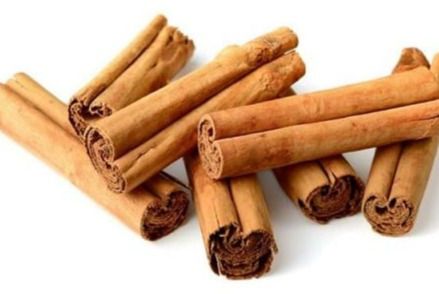
Surprisingly there are actually four types of cinnamon in circulation around the world and two of those are the most commonly used: Ceylon (Cinnamomun Verum) and Cassia (Cinnamomum Cassia). The distinction between the types is usually determined by the amount of Coumarin present as well as the quality of harvest, essential oils present, texture and taste.
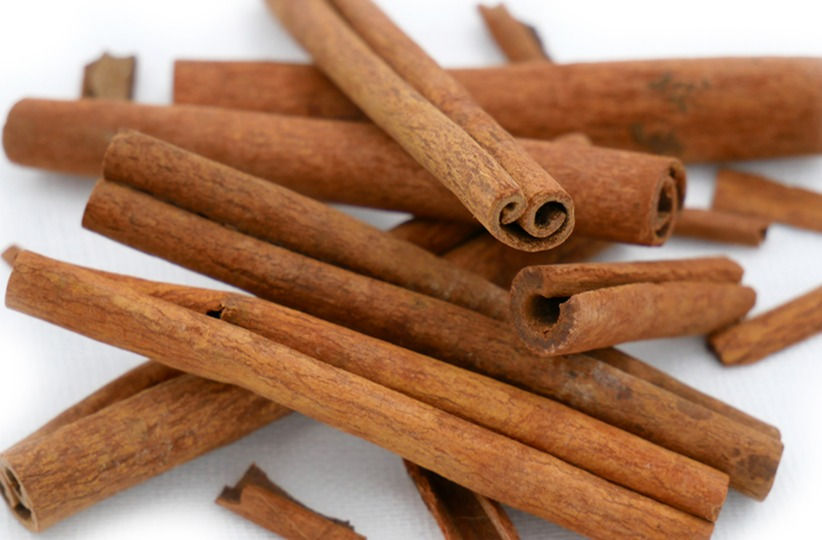
Ceylon cinnamon, native to Sri Lanka, is classified as the 'true cinnamon' of them all as it is the lowest in Coumarin, the most delicate in flavour and is sweeter in terms of the spiciness. It is also has the strictest form of cultivation (that's what makes it so good) making it the most expensive cinnamon on the market. Cassia cinnamon, native to Southern China, is stronger and spicier in flavour, is thicker (grainier) in texture and harvested simpler and faster with a much higher content of Coumarin. This is the cinnamon that you will find in supermarkets as it is much cheaper than Ceylon. Coumarin in high doses is considered toxic, however, to reach minimum lethal toxicity in an average human you would need to consume 3.5kg (about 15 cups of cassia cinnamon) in a day! It is recommended that if you choose to consume more than a tsp of cinnamon a day to use Ceylon instead, however it may not be necessary as consuming foods high in vitamin K (or taking a supplement) may aid in the presence of Coumarin in the body. Cinnamon bark is filled with antioxidants, 41 different protective compounds have been identified thus far, giving it its powerful protection against oxidative stress and free radical damage. Cinnamon bark is also an anti-inflammatory and may also aid in pain management (menstrual and muscle). Cinnamon bark also aids those with diabetes, high cholesterol and heart disease by reducing blood sugar spikes, increasing insulin sensitivity and improving blood markers, reducing levels of bad cholesterol while keeping the good cholesterol levels and increasing circulation and tissue repair. Another great benefit is cinnamon's ability to block the Tau protein from accumulating in the brain that is a precursor to Alzheimer's disease as well as aiding those with Parkinson's disease by improving motor function, normalising neurotransmitter signals and protecting neurons. Lastly, cinnamon bark also aids in fighting and preventing cancer, fighting bacterial and fungal infections, tooth decay and bad breath, preventing and fighting candida, reducing the symptoms of allergies and combatting HIV.
Drinking a cup (or more) of cinnamon bark tea a day is considered safe. Ceylon cinnamon is the preferred cinnamon to use to ensure that there is no toxicity from the Coumarin. Consult a naturopath or homeopath for medicinal use.
Cramp Bark
Also known as: Guelder Rose, Water Elder, Snowball Tree, Highbush Cranberry
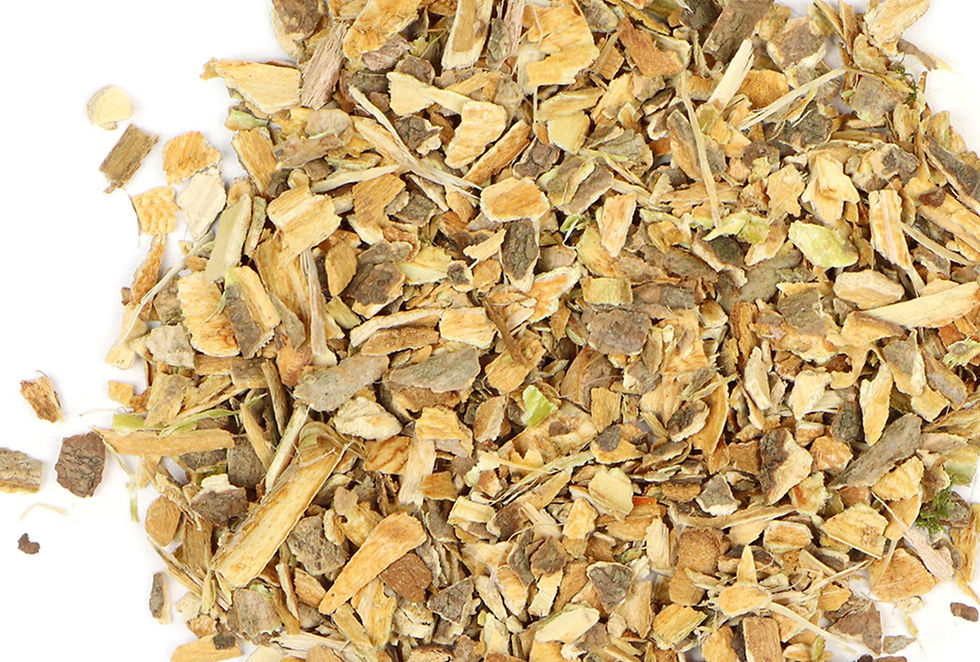
Cramp bark comes from the deciduous shrub, Guelder Rose (Viburnum Opulus) and is native to Europe, northern Africa and central Asia. The name of the bark tells you exactly what it is used for, to relieve cramping. Traditionally, cramp bark has been used to relieve menstrual cramping by easing muscle spasms and relaxing the uterus, thus targeting the cause of the pain instead of masking it. An active ingredient called Scopoletin (a derivative of coumarin) is thought to be the main reason for this amazing benefit. Cramp bark also contains methyl salicylate, which is a weak acting precursor to salicylic acid that is used in aspirin, therefore it has mild pain relieving benefits as well. Cramping and pain caused post childbirth by the shrinking of the uterus back to its normal size can also be relieved by cramp bark. It has even been reported to relieve cramping in other areas of the body such as legs, back, gastrointestinal and bronchial. Cramp bark is also high in citrate which protects the kidneys against forming kidney stones. Some people can develop kidney stones due to a deficiency of citrate. Cramp bark also helps to flush kidney stones from the body more easily. With antioxidant properties (flavonoids and carotenoids), cramp bark helps prevent and reverse cellular damage, has anti-diabetic effects by lowering your risk of developing type 2 diabetes and could also help treat endometriosis. Lastly, cramp bark has been used to help prevent miscarriage due to its relaxation of the uterine tissues as well as during pregnancy from cramps or pain and general muscle cramping.
Drinking a cup of cramp bark tea a day is considered safe. For extended periods of time drinking cramp bark, it is best to consult your local naturopath or homeopath for correct methods. Drinking this tea sporadically seems like the safest approach. Do not exceed the recommended dosage of health care practitioners or labelling.
Pau d'Arco Bark
Also known as: Taheebo, Lapacho
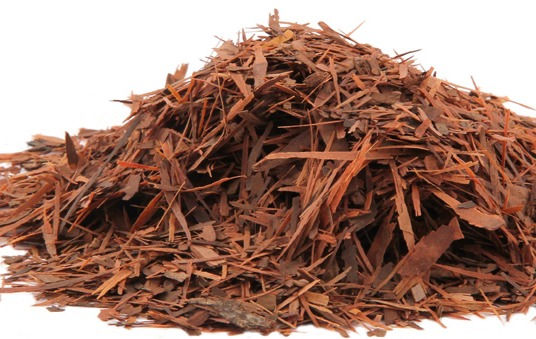
The Pau d'Arco tree, known as the Pink Trumpet Tree, when in full bloom is covered in bunches of pink flowers, giving it its well deserved name. Two species of Pau d'Arco are commonly used for its medicinal bark, Tabebuia avellanedae and Tabebuia impetiginosa. Both are synonymous with Handroanthus impetiginosus, another scientific name for this large deciduous tree native to Central and South America. The inner bark of the tree is used for medicinal purposes, so it is important that when purchasing Pau d'Arco products to know where the bark has come from and whether the outer bark has been used instead (this is what we don't want). Compounds called naphthoquinones (specifically, lapachol and beta-lapachone) that are found in Pau d'Arco bark are said to be the main reason for its healing properties, as they are anti-fungal, anti-viral and anti-bacterial. The bark also contains a potent antioxidant called quercetin. Together, these are shown to be effective against bacterial infections such as H. pylori, S. aureus, E. faecalis, C. gattii, and yeast infections (oral and vaginal by application of a tea to the area) such as candida (Candidiasis). Pau d'Arco bark also aids in the healing of gastric and peptic ulcers, in killing cancer and preventing tumour growth, detoxifying the bowels (loosening stools) and protecting against viral infections such as the flu, the cold and herpes virus. Pau d'Arco bark is also rich in selenium which protects against free-radical damage, inflammation and boosts metabolism.
Drinking a cup of Pau d'Arco bark tea is considered safe. For dosage recommendations to treat health ailments consult your local naturopath or homeopath. Sticking to recommended dosages is the best way to go about it.
Prickly Ash Bark
Also known as: Toothache Bark, Pepperwood, Hercule's Club, Yellow Wood
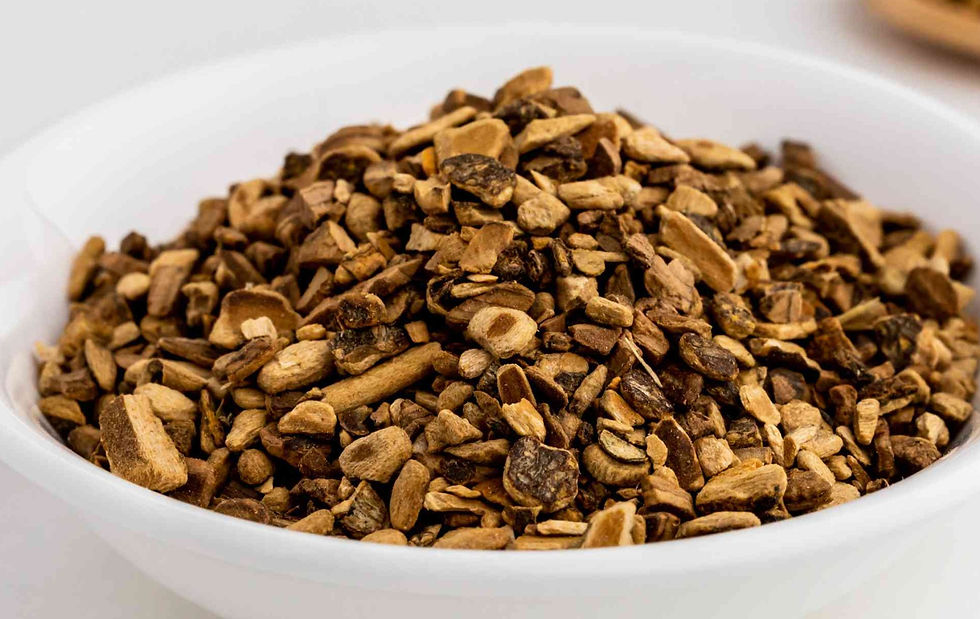
The prickly ash tree is part of the Zanthoxylum genus, with two species widely used in circulation: Northern prickly ash (Zanthoxylum Americanum) and Southern prickly ash (Zanthoxylum Clava-herculis). The former native to Northeastern United States and the latter Southeastern United States. Both the bark and berries are used for medicinal purposes, the bark more so than the berries, as the berries have not been researched enough to know if they hold the same properties (even though it is assumed they do). Prickly ash has anti-fungal and anti-bacterial properties that may have positive effects in fighting 11 types of fungal infections such as Candida albicans and Aspergillus fumigatus. With strong anti-inflammatory properties, prickly ash is said to inhibit the buildup of nitric oxide which leads to inflammation, thus also aiding in pain relief. The bark is said to cause a numbing sensation in the mouth when chewed, which is where the name 'toothache bark' originated, hence its relief against tooth pain. It also produces a warming sensation (dilating blood vessels and stimulating blood circulation) when consumed and increases stomach activity, stimulating secretions of saliva, mucous and hydrochloric acid aiding in digestion, constipation, diarrhoea and gas. Because of the stimulation of blood circulation, prickly ash may also aid varicose veins, spider veins and haemorrhoids, as well as increasing blood flow and oxygenation to the brain and blood flow to legs and hands. Lastly, prickly ash has been used to treat rheumatism, typhoid, colic, skin diseases, ulcers and impurities of the blood.
Drinking a cup of prickly ash bark tea a day is considered safe however information is lacking on the proper consumption ratio, therefore stick to guidelines of practitioner or manufacturer recommendations. Consult your local naturopath or homeopath for health treatments.
Slippery Elm Bark
Also known as: Red Elm, Soft Elm, Indian Elm, Moose Elm

The slippery elm tree, known as Ulmus Rubra, is a deciduous elm tree native to eastern North America. The term 'slippery' is derived from the inner bark's high mucilage content which becomes gel-like once mixed with water. This mucilage is what aids the body internally by alleviating inflammation and irritation by lining the gastrointestinal tract with a demulcent over the mucous membranes. This also aids in constipation (as a soluble fibre) and diarrhoea (in most cases stopping it instantly). Thus slippery elm bark is ideal for those suffering from acid reflux (heartburn), irritable bowl syndrome (IBS), Crohn's disease (my grandma uses it for this), ulcerative colitis, stomach ulcers, GERD and irritation of the urinary tract or bladder infections. Slippery elm bark is also an antioxidant and antibacterial, and has been used topically to help heal wounds (cuts, burns, blisters, etc) by speeding up the healing process and aiding in skin conditions such as psoriasis. Slippery elm bark also contains calcium which is said to act as a mild antacid, as well as iron, magnesium and potassium. I, myself can attest to the benefits of slippery elm bark as it has become a staple in my home and first aid kit. I do have it in both tea and powder form, and have used it for intestinal and stomach issues as well as deep cuts and grazes (creates its own scab).
Do not take slippery elm bark if you are pregnant (may cause miscarriage) or if your intend to get pregnant (consult your doctor).
Drinking a cup (or more) of slippery elm tea a day is considered safe. For specific treatment of health conditions consult your local homeopath or naturopath for the best option.
White Oak Bark
Also known as: Tanner's Oak/Bark, Common Oak, English Oak, Stone Oak
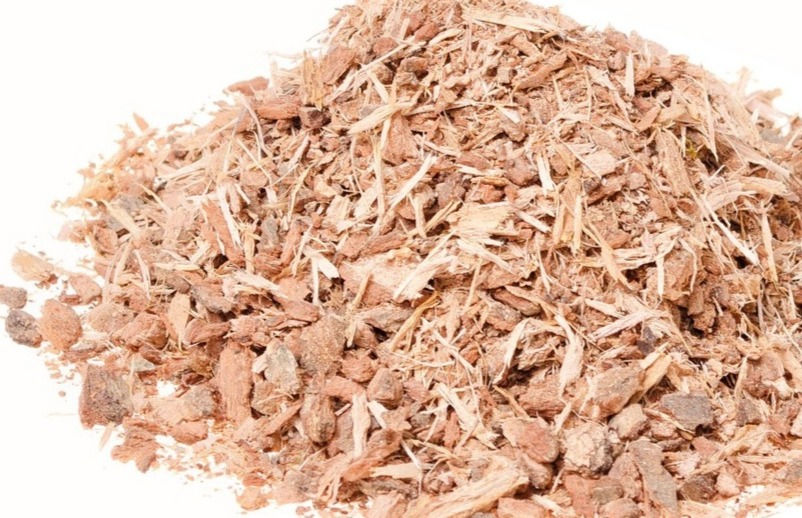
The white oak (Quercus Alba) is a large deciduous tree native to eastern and central North America with acorns as its fruit. The inner bark and galls (round growths) of the tree are used for medicinal purposes and in Ayurvedic medicine dating back hundreds of years. The high tannin content in white oak bark is said to be where most of the known benefits occur. It is also where the tannin content in most wines comes from as they are aged in oak barrels. Because tannins are an astringent, they bind proteins in the skin, thus tightening pores and drying out irritated areas, as well as being antibacterial and anti-inflammatory, making white oak bark ideal for treating haemorrhoids, mouth sores and infections (gingivitis) and skin irritations especially of the scalp (as a hair treatment for dandruff/flaky scalp). White oak bark also has a vascular toning effect that causes veins to contract which aids in preventing and treating varicose veins. It is also a styptic herb that stops bleeding internally and externally when topically placed on a wound or drunk as a tea. White oak bark also aids in soothing diarrhoea by strengthening the intestinal lining and fighting bad bacterial overgrowth such as E. coli. It also has a saponin content that gets rid of phlegm and mucous from the respiratory system making it great for colds, coughs and flus. Lastly, white oak bark also has antioxidant properties that boost heart and liver health and function, as well as possible cancer fighting effects.
Do not take white oak bark if you have an allergy to oak trees, if you are taking iron supplements (may decrease absorption due to tannins) or in high doses (stick to dosage recommendations).
Drinking a cup of white oak bark tea a day is considered safe for up to a month. For stronger dosages consult your local naturopath or homeopath. Discontinue use if you experience any adverse reactions.
White Willow Bark
Also known as: European Willow, Willow Bark, Weeping Willow, Golden Willow
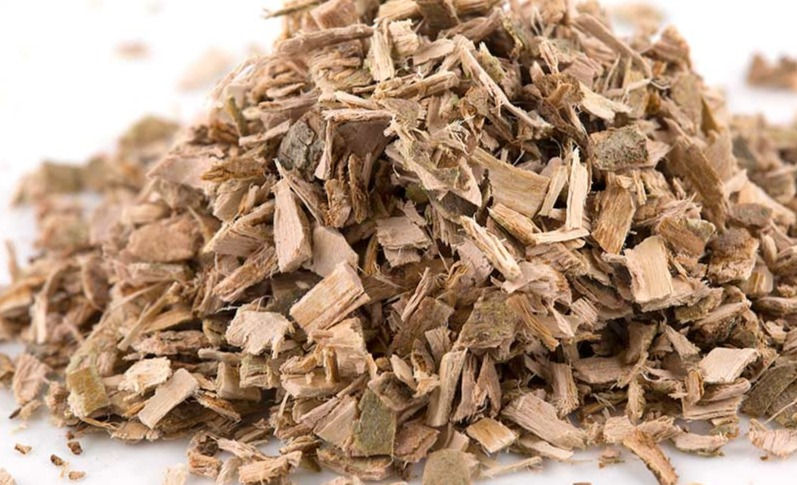
The white willow tree (Salix Alba) is one of five species of willows, this large deciduous tree being native to Europe and Asia. All five species are purported to hold the same medicinal properties with white willow being the most commonly found. Most willow bark teas might hold 2-3 different varieties unless specifically stated, however this does not necessarily change its efficacy. Willow bark has been used for over a thousand years as a pain-reliever and is used as a natural alternative to aspirin, especially for those with chronic pain. White willow bark contains an active ingredient called salicin (very similar to aspirins ingredient) and together with the barks flavonoids and polyphenols we get antioxidant, fever-reducing, anti-inflammatory, antiseptic and immune-boosting properties. Therefore, white willow bark is used for pain associated with rheumatoid and osteoarthritis, menstrual cramps, headaches, back pain etc, as well as fevers, colds and flus. White willow bark can also be chewed, consumed in powdered pill form or drunk as a tea to get its great benefits.
Drinking a cup of white willow bark tea a day is considered safe for up to 12 weeks. For long term use consult your local naturopath or homeopath. Always stick to the recommended dosage as overuse or overdose can cause harm to your health. Discontinue use if you experience stomach or digestive issues.
Wild Cherry Bark
Also known as: Black Cherry, Wild Black Cherry, Mountain Black Cherry
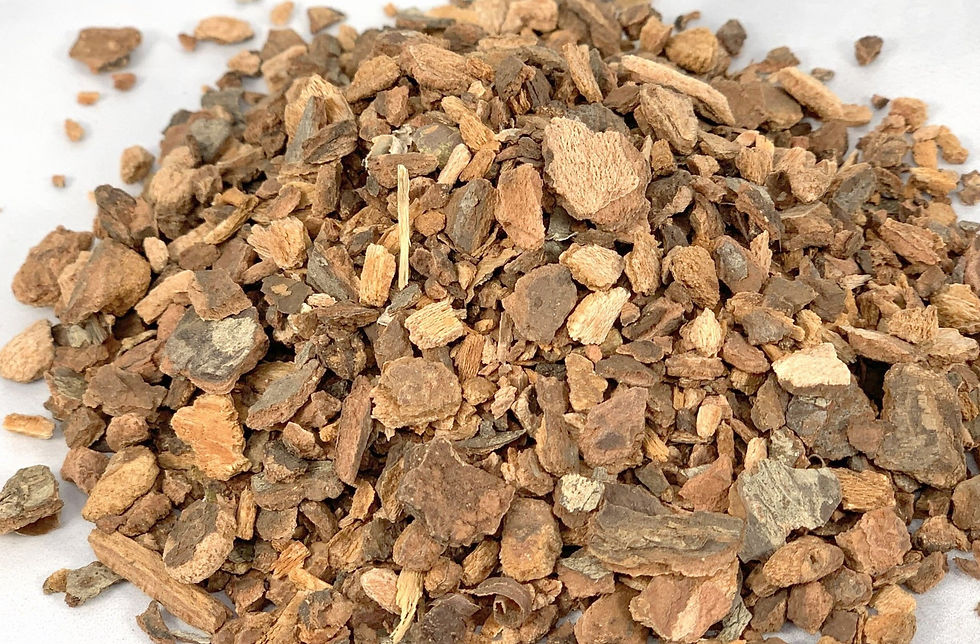
The wild cherry (Prunus Serotina) is a deciduous tree in the Rosaceae family native to eastern North America with black fruit that resembles the common cherries we all love to eat. Surprisingly enough they are not very closely related, both having different subgenus's, wild cherries being of the Padus and common cherries being of the Cerasus. Wild cherry bark has been used for hundreds of years for its soothing qualities and can usually be found as an ingredient in most cough syrups. The bark is antibacterial, antiviral and anticancer in nature and rich in minerals such as iron, zinc, calcium and magnesium. Phytochemicals such as quercetin and kaempferol, and cyanogenic glycosides such as prunasin and amygdalin, are also present. All these properties make wild cherry bark antitussive (cough suppressant), antispasmodic (muscle spasm suppressant), a vasorelaxant (decreasing vascular pressure), an expectorant (mucus clearing) and a decongestant (nasal congestion clearer). Therefore wild cherry bark is great for coughs, persistent coughs (post sickness), night coughs or exhausting coughs by drying and clearing mucus and opening airways, especially in conditions such as bronchitis, laryngitis, whooping cough and asthma. As well as a digestive aid by stimulating bile production and digestive enzymes to break down food easier, and easing diarrhoea by suppressing muscle spasms. Thus aiding those with gastritis, colitis and irritable bowel syndrome. Lastly, wild cherry bark may also aid those with heart palpitations, irregularities and rapid pulse by strengthening and toning the heart due to the barks sedative properties.
Drinking a cup of wild cherry bark tea a day is considered safe. It is best to stick to recommended dosages as it may be unsafe when too much is consumed. For the treatment of health concerns consult you local naturopath or homeopath.
A last note...
Although the barks discussed above are the most common you will find, there are still more out there in the world. Most likely there will be a part 2 to this blog but for now I hope you find this informative enough to continue your own research in determining what is best suited for you. Always consult a health care professional when treating health issues, the information above is not meant to be a treatment or cure, but a guide. I hope you will enjoy the benefits of herbal bark tisanes just as much as I do.

Comentarios